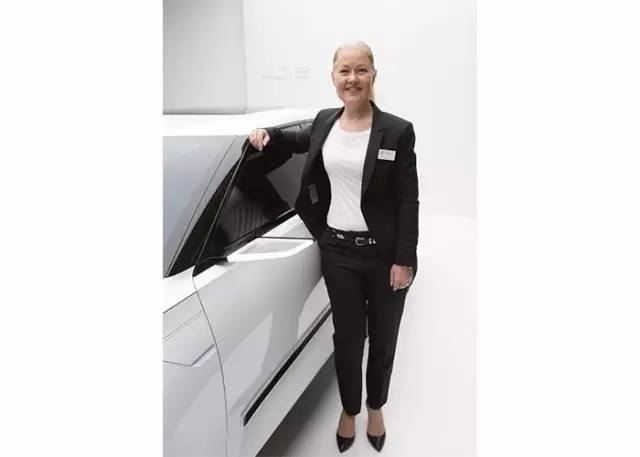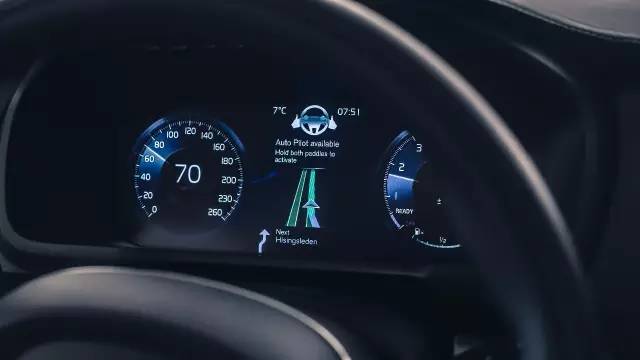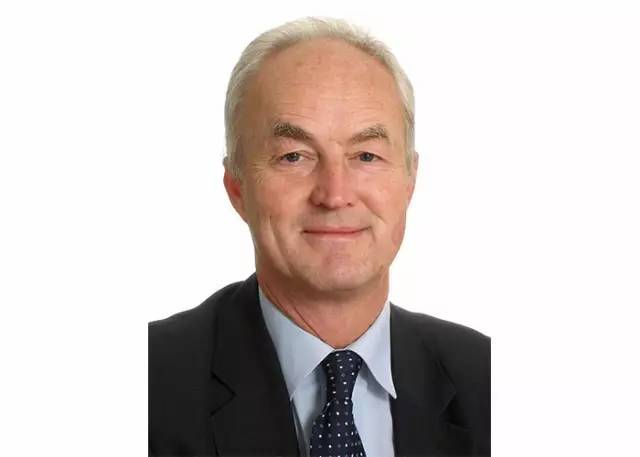 沃尔沃和优步的自动驾驶合作研发项目将使用一款来自沃尔沃SPA平台的车型。
沃尔沃和优步的自动驾驶合作研发项目将使用一款来自沃尔沃SPA平台的车型。 作为沃尔沃40系副总裁,HelenBergström Pilo是沃尔沃安全高管团队的关键成员。该团队负责确保公司的较小车型也能提供与旗下较大车型同等水平的安全和功能。
作为沃尔沃40系副总裁,HelenBergström Pilo是沃尔沃安全高管团队的关键成员。该团队负责确保公司的较小车型也能提供与旗下较大车型同等水平的安全和功能。 沃尔沃的IntelliSafe(智能安全)自动驾驶仪接口是公司自动驾驶研发项目的组成部分。
沃尔沃的IntelliSafe(智能安全)自动驾驶仪接口是公司自动驾驶研发项目的组成部分。 沃尔沃政府事务总监Anders Eugensson相信,自动驾驶技术仍有进一步提升的潜力。
沃尔沃政府事务总监Anders Eugensson相信,自动驾驶技术仍有进一步提升的潜力。
最近,以安全著称的沃尔沃汽车(Volvo Cars)与汽车驾乘共享服务平台优步(Uber)宣布将一起开发下一代自动驾驶(AD)技术,并最终实现SAE 5级全自动汽车(即无刹车、油门、转向),这一消息可能会给那些害怕、怀疑甚至反感自动驾驶技术的人带来一丝安慰。
沃尔沃曾公开表示,2020年后,公司将保证任何驾乘沃尔沃新车型的用户绝不会遭遇任何致命或严重受伤事故。可以看出,此次沃尔沃与优步的合作也与2020目标相一致。这个大胆的声明首次出现在2007年,当时沃尔沃推出了大量安全功能,并坚信这些功能可帮助公司实现最终目标。
此外,沃尔沃也相信自动驾驶技术可以剔除人为错误,而人为错误一直是车祸发生的主要原因。自动驾驶可以将驾驶安全提升至过去难以企及的新高度。
沃尔沃的信心绝非毫无道理,这家公司拥有一个庞大的事故分析数据库。据了解,公司的数据库可以追溯回1970年,收集了涉及7.2万名人员的4.2万次事故(包括轻微事故和致死事故)。沃尔沃汽车集团(Volvo Car Group)政府事务部总监Anders Eugensson表示,这些信息可以形成一个巨大的数据矩阵,为公司的2020年目标提供评估指导。
Eugensson认为,60年前,沃尔沃工程师Nils Bohlin发明了3点式安全带,极大地提高了汽车的安全。60年后的今天,自动驾驶技术不仅将“飞入寻常百姓家”,而且甚至可以让安全带和安全气囊“永远退休”。
作为沃尔沃40系副总裁,HelenBergström Pilo是沃尔沃安全高管团队的关键成员。该团队负责确保公司的较小车型也能提供与旗下较大车型同等水平的安全和功能。
SAE5级自动“前进一大步”
Eugensson告诉《汽车工程》,“现在我们正在研发SAE 4级自动驾驶技术。”他解释说,这与真正的SAE 5级自动驾驶仍有相当大的差距,需要巨大投资,但可以给整个社会带来巨大收益。随着安全水平不断提升,不仅交通运输管理,医疗保健领域也会从中受益。
在沃尔沃和优步的联合项目中,这两家公司均会使用同一款基本车型来搭载自动驾驶系统,实现各自的自动驾驶战略。沃尔沃和优步预计将建立长期行业合作伙伴关系。
目前,本次联合项目将采用一款与现行版XC90、S90和V90同样来自沃尔沃模块化可拓展平台架构(SPA平台)的基础车型。SPA的可扩展性,可以为这款车提供自动驾驶所必需的安全、冗余及其他相关功能。
优步首席执行官Travis Kalanick表示:“每年有超过一百万人死于车祸。这些悲剧本可以通过自动驾驶技术避免,但我们无法独立完成这一任务。”因此,优步和沃尔沃的合作诞生了。这俩家公司可以借助彼此的专业,分别实施各自的全自动驾驶系统全球推广计划。
由于各个国家的政策要求有所差异,自动驾驶汽车的上市时间存在一定差异。另外,为了在各个地区证明全自动驾驶的潜力,公司还必须承担更多成本开支,具体包括在欧洲各大主要城市投入大型自动驾驶汽车,进行相关道路测试。
根据Kalanick的说法,90-95%的事故均由人为错误产生。那么,这是否意味着全自动汽车可以避免90-95%的车祸吗?
“差不多吧。汽车可以从容地完成每一个决定,绝不会疲惫或分心。”Kalanick表示,“但车辆仍需与一些普通道路用户互动,比如行人和自行车等。”另外,自动驾驶汽车还面临其他车辆(包括传统汽车和自动驾驶汽车)带来的挑战,比如其他汽车可能会在十字路口闯红灯等。
Kalanick承认自动驾驶技术可能无法将事故发生率降低95%,但他相信沃尔沃的系统可以在未来1到2年内充分发展,变得更加智能。“此外,如果自动驾驶汽车进入行人很多的区域,那我们可能不得不非常小心,缓慢驾驶。”
2017年将迎来第一步
目前,大部分自动驾驶系统将用到的技术均已登陆沃尔沃汽车,包括雷达、立体相机、超声波雷达、卫星导航以及任何可以协助车辆从各个方向观察周边环境的技术。沃尔沃汽车甚至可以在通过低桥或进入停车场时观察车辆上方的情况。
Eugensson对沃尔沃的未来技术充满信心,他补充说:“也许,未来的汽车将成为一个移动起居室。如果我们可以制造出绝不会发生车祸的汽车,那么‘驾驶员’也可以转过身来面向乘客沟通交流,甚至一起用餐!事实上,驾驶员这个概念可能会成为历史。”
Eugensson预测,未来30年后,可能没人需要坐在如今的驾驶座,那时的汽车将实现完全自动。
这话从一位大牌汽车厂商高管口中说出似乎有些惊人,但也反映了全自动级别的自动驾驶技术已经触手可及。
虽然沃尔沃仍会将“安全”作为公司的主要卖点,但事实上各个品牌的自动驾驶汽车均需符合非常严格的法律标准,也就是说可能达到同样的安全水平。因此,沃尔沃必须调整自己的主要卖点。事实上,沃尔沃已经有所行动,公司计划通过提升质量、提高品牌形象,凭借集安全性、舒适度与功能性于一身的综合实力进军豪车市场。
Eugensson说,“但这并不是单纯把各种技术一股脑塞进车里,我们必须确保将每一件事做到极致。”
除了生产较大车型的SPA平台,沃尔沃还拥有一款生产较小车型的紧凑型模块化平台(CMA平台)。据了解,沃尔沃的较小车型也必须在2020年前达到与较大车型同等水平的安全和自动驾驶标准。沃尔沃40系(较小车型)副总裁Helena Bergström Pilo表示:“SPA和CMA平台有些相似,但主要生产不同尺寸的车型。第一款基于CMA平台的沃尔沃车型将在2017年年底问世。我们暂时不会公布具体细节,但目前已经问世的40.1和40.2概念车均可以展示这个平台的功能。”
CMA平台可以支持包括纯电动系统在内的多种动力系统,从而为沃尔沃实现终极安全目标带来更多的设计和工程方面的可能性,并同时在竞争激烈的汽车市场内不断降低重量和成本,提升舒适度和质量。
Pilo指出,所有车型面对的共同挑战是自动驾驶。“我们必须继续优化自动驾驶技术,直到这种技术真正可以在所有交通环境下实现全自动驾驶。这是沃尔沃所面临的挑战,也是整个汽车行业的挑战。”
The news that Volvo Cars, renowned for its safety focus, and ride-sharing company Uber, are working together to develop next generation autonomous driving (AD) cars eventually reaching full SAE Level-5 standard (no steering wheel or controls), may bring comfort to those who are scared, skeptical or just scorn the advent of being driven by such radical robotics.
But this latest development sees a further step to AD being taken in parallel with Volvo’s avowed intent that no one traveling in its new models from 2020 onwards will be killed or seriously injured. That bold statement was first uttered in 2007, presaging the introduction or development of a plethora of safety features that the automaker believes will enable it to achieve its target.
Volvo is also confident that AD will take out the human factor as the major cause of auto accidents. It promises to project driving safety into a once unbelievable new dimension.
Backing Volvo’s confidence is a massive database of accident analyses stretching back to 1970. It concerns 42,000 accidents, from minor to fatal, involving 72,000 vehicle occupants. This information forms a matrix to assess its aims for the 2020 target, says Anders Eugensson, Director Governmental Affairs at Volvo Car Group.
As the 2020s unfold, by then more than 60 years after Volvo engineer Nils Bohlin innovated the 3-point seat belt, not only is AD likely to become commonplace “sometime in the future,” but restraints and airbags may no longer be needed, believes Eugensson.
SAE Level 5 "a big step"
“We are working now on SAE Level-4 of autonomous driving technology,” he told Automotive Engineering. Reaching Level-5 will be a big step and one which will take a lot of investment, he explained, but will bring huge benefits to society in general, not just via traffic management but also in regard to health-care economics as safety levels soar.
The Volvo-Uber link will see both companies using the same base vehicle type for the next stage of their own autonomous strategies in what is expected to be a long-term industrial partnership.
The new base vehicle will be created off Volvo’s modular Scalable Product Architecture (SPA) used by the current XC90, S90 and V90 models. The SPA’s scalability will allow required safety, redundancy and other features central to AD operation.
Uber Chief Executive, Travis Kalanick, states: “Over one million people die in car accidents every year. These are tragedies that self-driving technology can help solve but we can’t do this alone.” Hence the link-up with Volvo that will enable both companies to meet anticipated schedules for full AD introduction internationally.
That schedule will vary depending on differing legislation in individual countries, a fact that adds to the investment needed just to demonstrate the potential capability of fully autonomous systems. The cost includes running large fleets of autonomous-capable test vehicles in major European cities, which Volvo is now undertaking.
Underlining Kalanick’s words, Eugensson states that 90-95% of accidents are due to human error. So does that mean that fully autonomous vehicles will see accidents reducing by a similar figure?
“Almost. The car can make every decision and will not get tired or distracted," he said. "But there would still be an interaction with some ‘normal’ road users.” This means pedestrians and cyclists, and there remain some specific challenges regarding other vehicles (conventional and AD), particularly at intersections, with such dangers as other cars running a red light.
While he admits that the accident rate may not go down by 95%, in a year or two Volvo's systems will have more intelligence to deal with this, he believes. "Also, if an autonomous car enters an area where there are a lot of pedestrians we have to be very cautious and drive very slowly.”
First step coming 2017
Most of the technology that will be used for autonomous driving will be an extrapolation of systems already used on Volvo cars. These include radar, stereo cameras, ultrasonics, satellite navigation – and anything and everything that allows the car to be aware of what surrounds, it or approaching, from any direction — even above, such as a low bridge or entry into a parking lot.
Eugensson is so confident of the efficacy of future Volvo technology that he adds: “Maybe the future car will be a mobile living room, too. It could be used as a way of socializing with other occupants because if we produce cars so there are no crashes you, as the ‘driver’ would be able to turn around and maybe even have a meal on the move! In fact, there would not be a driver as such."
No one would need to be in what now would be the driving seat; the vehicle would be totally autonomous, he projected, offering a 30-years-from-now forecast.
It is a seemingly remarkable statement from a senior executive of an established OEM but it underlines the level of technology advances that are now within reach.
Although Volvo would retain its safety USP, all other autonomous vehicles would also need to conform to very high legislated standards, which would in theory, create a level safety technology playing field. Therefore Volvo has to modify its USP. It is already doing that, planning to lift its quality and image into the premium class, combining safety with high levels of comfort and capability.
“But it is not just about putting technology into a car; we have to assure our customers that we have done everything absolutely thoroughly,” says Eugensson.
Complementing Volvo’s large car SPA is its Compact Modular Architecture (CMA) for smaller cars that must also meet Volvo’s safety criteria for 2020 and its AD plans. Helena Bergström Pilo, Vice President of Vehicle Line 40 (smaller series cars), says: “SPA and CMA are related but are of different sizes. The first car using the CMA will appear at the end of 2017. We are not releasing details yet but we have shown two concepts, the 40.1 and 40.2 which show the architecture’s capability.”
The CMA can take a range of powertrains including pure electric, which broadens the design and engineering challenges of meeting Volvo’s ultimate safety aim, while keeping mass and cost down, comfort and quality up, in a fiercely competitive segment.
But the common challenge across all model ranges is AD, noted Pilo: “It is to expand that technology and to the level where it can really be called fully autonomous in all traffic situations. That is the challenge that faces Volvo — and the automotive industry in general.”
Author: Stuart Birch
Source: SAE Automotive Engineering Magazine
等级
打分
- 2分
- 4分
- 6分
- 8分
- 10分
平均分
- 作者:Stuart Birch
- 行业:汽车
- 主题:安全性人体工程学/人因工程学
